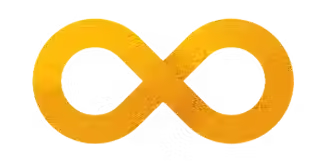Supporting Autism
Referring to autism using "support" terms.
What Evaluators Do...
Since 2013, autism has been clinically defined by support levels (1-3) in the DSM-5, focusing on social communication differences and restricted/repetitive behaviors. From a neurodiversity perspective, the "disorder" label is considered offensive by some as it pathologizes natural neurological variation. Meanwhile, some individuals with Level 3 (high support needs) and their caregivers feel the term "severe" inadequately captures their experience and advocate for distinct recognition of their significant challenges—particularly when communication barriers limit self-advocacy—while maintaining that tailored support is crucial for thriving.

Assigning Support Levels
For purposes of medical or psychological evaluation results, a "DSM-5 clinical diagnosis" categorizes an autism diagnosis into 3 levels.
Requires Support
Requires Substantial Support
Requires Very Substantial Support
Numerous opinions abound regarding the advocacy of all forms of autism. Respect is paramount for all parties involved. Progress is achieved when varied viewpoints cover the full spectrum of symptoms in a child, teen, or adult.

Famous Autism Quotes
“It is now our charge to explain that regardless of how obvious our autism is to others, it is equally present to the person living it. It is our job to correct those who reject some for being too “high-functioning” or forget those who are more visibly challenged. It is our privilege to speak aloud for those who can’t and to have compassion for those who can. To the research community, educators, scientists, psychologists, and - most important - to regular folks like you and me... the best answer isn’t that we’re Aspie or that we’re autistic.
The best answer is...
...we aren’t any one word.
We are the spectrum.”
- Jennifer Cook
Autism in Heels
If you've met one person with autism, you've met one person with autism.
- Dr. Stephen Shore
This statement falls in line with the infinity symbol representing neurodiversity or autism, that there are an infinite number of ways that it autism or neurodiversity in general may present. There is a collective group that is unified by similar traits yet each presentation of autism is unique.

“Autism is not a processing error. It’s a different operating system."
- Tony Attwood, clinical psychologist


“Neurodiversity is the idea that neurological differences like autism and ADHD are the result of normal, natural variation in the human genome.”
- Judy Singer, sociologist who coined the term “neurodiversity”


The multi-colored infinity symbol represents neurodiversity, while the golden infinity symbol specifically signifies autism—reflecting the belief that autism's complexity extends beyond the clinical three-level system, presenting in infinite variations. Despite this diversity, common threads exist, and identifying shared characteristics helps in overcoming barriers.
Return to the Autism University DEFINTIONS homepage for more on autism definitions and classification perspectives.
Exploring support strategies for all autism levels naturally leads to a strengths-based approach. This method focuses on cultivating individuals' positive attributes—inherent gifts, special interests, and developed skills—across the entire spectrum. Rather than emphasizing challenges or neurotypical comparisons, it nurtures talents where individuals naturally excel or have worked hard to develop.
